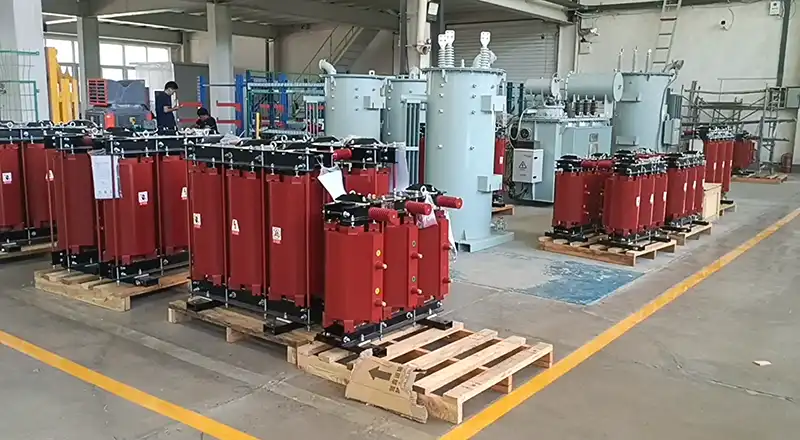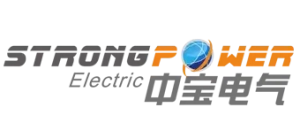What is a reactor?
In electrical circuits, the opposition to alternating current (AC) caused by capacitance and inductance is termed reactance, denoted by the symbol X. Reactors, commonly referred to as inductors in industrial applications, function based on the fundamental principle that an electric current flowing through a conductor generates a surrounding magnetic field. Consequently, all current-carrying conductors exhibit inherent inductive characteristics.
However, a straight conductor carrying current possesses relatively minimal inductance, producing only a weak magnetic field. To enhance inductive effects, practical reactors typically adopt a coiled wire configuration, forming what is known as an air-core reactor. For applications demanding greater inductance, an iron core may be incorporated into the coil structure, creating an iron-core reactor.
From a technical classification standpoint, reactance can be divided into two types: capacitive reactance and inductive reactance. Thus, inductors (providing inductive reactance) and capacitors (providing capacitive reactance) are collectively categorized as reactors.

Functions of Reactors
Based on circuit principles, reactors can be divided into two categories: series reactors and parallel (shunt) reactors. Their primary functions are current limiting and filtering. Below are the specific functions of different types of reactors:
- Function of Shunt Reactors
Shunt reactors are primarily used to improve the reactive power performance of power systems and are commonly applied in reactive power compensation scenarios. Their specific functions include:
Optimizing voltage distribution on long transmission lines.
Absorbing capacitive reactive power generated by charging in cable lines.
Preventing self-excited resonance when generators operate on long transmission lines.
- Function of Series Reactors
The core function of series reactors is to limit short-circuit currents. They can also be used in filters, either in series or parallel with capacitors, to suppress high-order harmonics in the power grid. In summary, series reactors primarily provide current limiting.
- Function of DC Reactors
DC reactors are typically used in variable frequency systems, installed between the DC rectifier and inverter stages. Their primary functions include:
Suppressing the AC component in the DC current, ensuring the continuity of the rectifier current.
Reducing current pulses, improving the stability of the inverter stage.
Enhancing the power factor of the inverter.
4. The primary functions of an input reactor include: suppressing current surges caused by sudden grid voltage fluctuations or operational overvoltages; eliminating spikes in the power supply voltage; and mitigating voltage distortion resulting from commutation in bridge rectifier circuits. This device safeguards the inverter, enhances power factor, prevents grid interference, and reduces harmonic current pollution from the rectifier unit.
5. The output reactor serves the following purposes: compensating for the distributed capacitance in 50-200 meter cables; suppressing output harmonic currents to increase output impedance; and lowering the DV/DT ratio to minimize high-frequency leakage currents, thereby protecting the inverter and reducing equipment noise. In power compensation applications, special care must be taken, as harmonic voltage and current surges can damage capacitors and degrade power factor, necessitating simultaneous harmonic control.
6. The primary role of a current-limiting reactor is to restrict feeder overcurrent during power system faults.
7. As a critical component in rectifier circuits, the smoothing reactor fulfills two key functions in medium-frequency power supplies: first, it limits short-circuit currents, preventing rectifier bridge overload during thyristor commutation; second, it suppresses medium-frequency interference on the power-frequency grid. Its filtering capability stems from its high inductance, which eliminates AC ripple in the rectified current and prevents inverter bridge shutdowns due to current interruptions. Additionally, in parallel inverter circuits, this reactor facilitates reactive power transfer through energy storage.
8. Inverter reactors are typically installed at the input or output of inverters or DC motor controllers. Their main functions include:
- Blocking the transmission of 3rd-5th order harmonics to the grid
- Minimizing harmonic interference with other devices
- Enhancing grid stability and power factor
- Restricting abnormal voltage fluctuations
- Suppressing inrush currents and smoothing waveforms
This device also provides the following key benefits:
- Neutralizes capacitive effects in lightly loaded lines and reduces power-frequency transient overvoltages
- Improves voltage distribution across transmission lines and prevents self-excited resonance in long-line generator operations
- Ensures localized reactive power balance under light loads, preventing uncontrolled reactive power flow and reducing line losses
9. Filter reactors, as essential components in high- and low-voltage filter cabinets, form resonant circuits with filter capacitors to selectively absorb specific harmonic frequencies. Their primary roles include eliminating the adverse effects of higher harmonics on electrical equipment (e.g., transformers), improving system power factor, and enhancing grid reliability and stability.
Working Principle of Reactors
Reactors generally employ an air-core coil design without ferromagnetic materials and can be installed in vertical, horizontal, or triangular arrangements based on practical requirements. During a short-circuit event in a power system, an excessively high short-circuit current is produced. Without current-limiting measures, electrical equipment may fail to operate stably. To ensure the circuit breaker’s interrupting capability meets specifications, a reactor is connected in series with the outgoing circuit breaker. This increases the short-circuit impedance, effectively suppressing the short-circuit current.
When a short circuit occurs, reactors produce a substantial voltage drop, which helps sustain the bus voltage level and minimizes voltage fluctuations. This ensures the stable operation of electrical equipment on unaffected lines.



